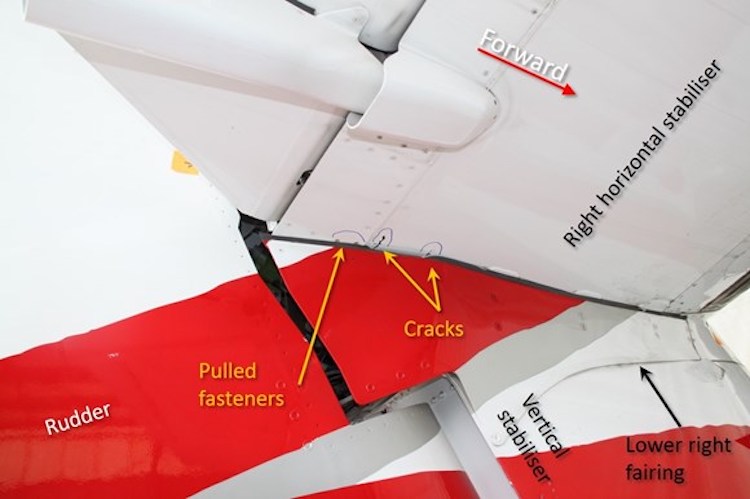
The Australian Transport Safety Bureau (ATSB) has released its final report into a 2014 incident where a Virgin Australia Regional Airlines ATR 72-600 suffered significant damage when pilots applied opposing control inputs to their control columns.
The turboprop VH-FVR was operating a regular public transport (RPT) service from Canberra to Sydney on February 20 2014 when the flight crew experienced a “significant windshear that resulted in a rapidly decreasing tailwind” on descent.
This led to a rapid increase in airspeed, with the primary flight display “likely indicating well above the maximum operating speed of the aircraft (VMO) of 250kt”, the ATSB final report published on Friday said.
In response, the first officer, who was the pilot flying, reduced power and made nose-up control inputs in an attempt to slow the aircraft.
However, the captain “perceived a need to take over control of the aircraft, with the intention of preventing the airspeed exceeding VMO”.
“The captain took hold of the controls and made nose-up pitch control inputs without immediately following the specified take-over procedure and alerting the first officer of his intent,” the final report said.
“About 1 second after the captain initiated the nose-up control inputs, the first officer (unaware that the captain was also making control inputs) reversed his control input.”
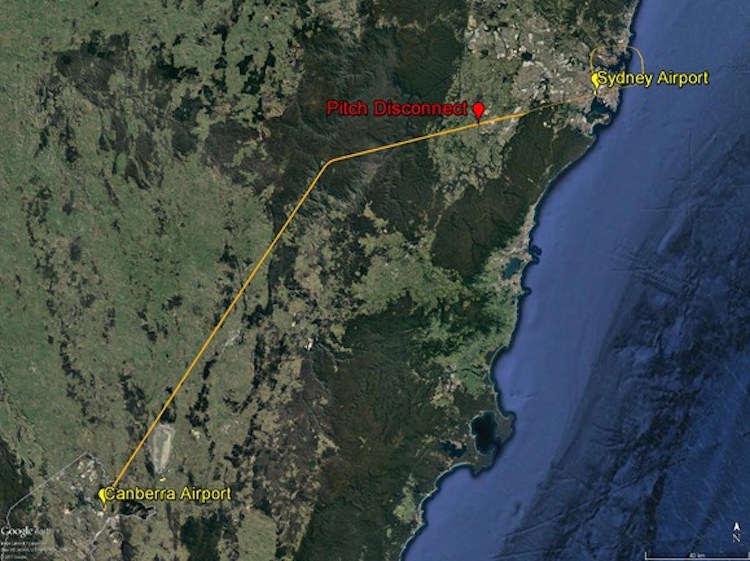
The two differential forces from the captain and first officer activated the pitch uncoupling mechanism, meaning the left and right pitch control systems were disconnected from each other.
As the ATSB explained, the pitch disconnect mechanism was intended for activation in the event one of the aircraft’s elevators being jammed.
In this case, the pitch uncoupling mechanism meant the elevators were able to operate independently of each other.
“Given the high airspeed, asymmetric elevator deflections that occurred immediately following the pitch disconnect event resulted in aerodynamic loads that exceeded the strength of the horizontal stabiliser and resulted in significant damage to the stabiliser,” the ATSB final report said.
This caused “significant damage” to the stabiliser.
However, this damage was not detected by licenced aircraft maintenance engineers who inspected the aircraft by torchlight at night after landing in Sydney.
The ATSB final report said the people involved in the inspection “did not carry out the specified general visual inspection of the stabilisers probably because of a breakdown in the coordination and certification of the inspection tasks between the engineers”.
“The damaged horizontal stabiliser was not detected and the aircraft was released to service,” the final report said.
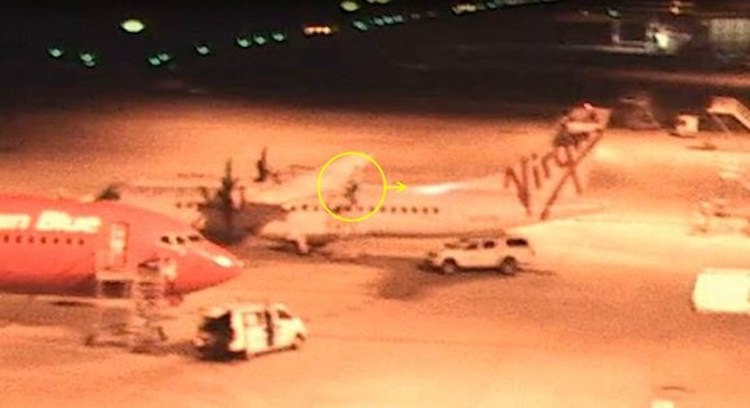
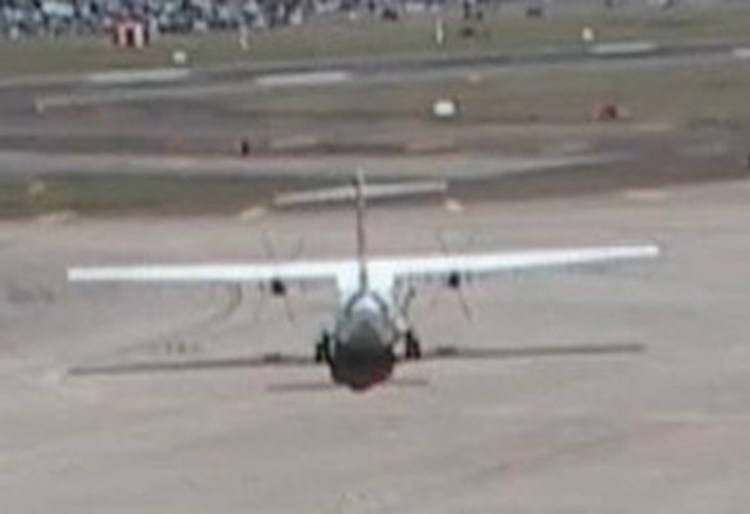
Over the next five days, the aircraft flew 13 more sectors.
After the 13th flight, on February 25, the pilot reported a possible bird strike while on descent into Albury, and ordered an inspection of the aircraft upon landing.
It was during this inspection when damage to the horizontal and vertical stabiliser fairing was noted, and a subsequent inspection linked the damage to the February 20 differential control event.
The damage included broken carbon plies, cracked joint sealant, deformations, and minor damage to the rudder, all of which it said were consistent with an overstress condition, and recommended replacement of the horizontal stabiliser, elevators, and vertical stabiliser.
A look at the damage is shown in the following images:
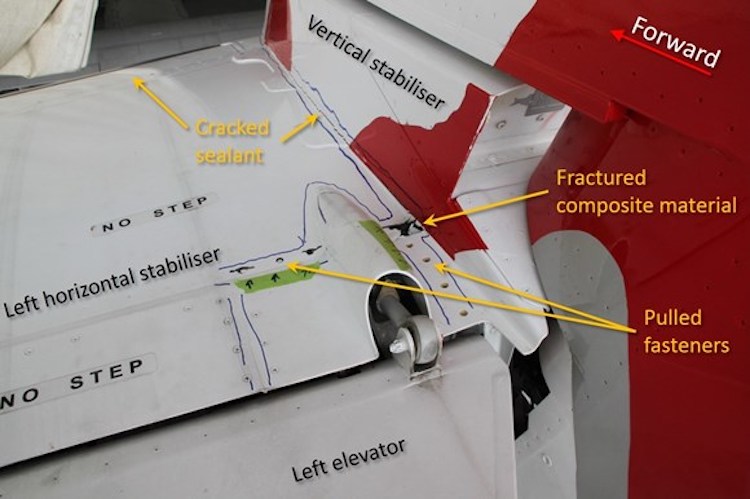
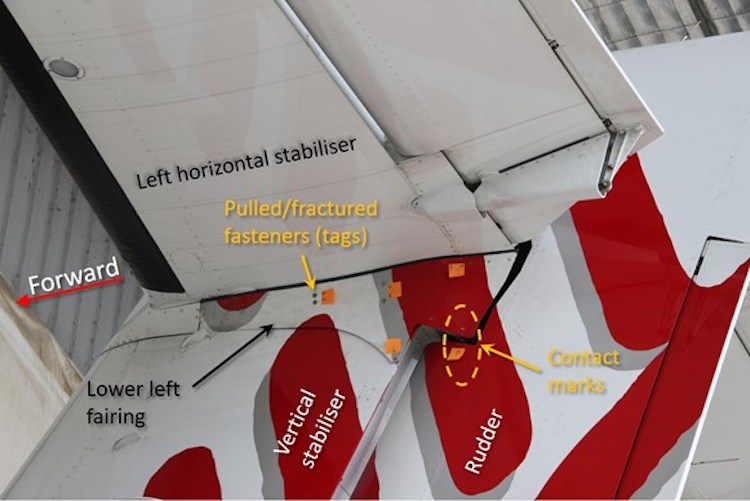

The final report followed two interim reports and a preliminary report in what the ATSB described as one of its most complex, thorough and protracted safety investigations ever undertaken.
The first interim report published in June 2016 highlighted the safety issue where inadvertent application of opposing pitch control inputs by flight crew could activate the pitch uncoupling mechanism which, in certain high-energy situations, could result in catastrophic damage to the aircraft structure before crews were able to react.
Then, in May 2017 the second interim report included three recommendations to address another safety issue where the aircraft manufacturer, ATR, “did not account for the transient elevator deflections that occur as a result of the system flexibility and control column input during a pitch disconnect event at all speeds within the flight envelope”.
“As such, there was no assurance that the aircraft had sufficient strength to withstand the loads resulting from a pitch disconnect,” the report said.
The final report’s safety recommendations called on the European Union Aviation Safety Agency (EASA) to take “further action to review the current design standard (CS-25) in consideration of effect that dual control inputs may have on control of aircraft”.
Meanwhile, it recommended ATR “assess the operational risk associated with limited tactile feedback between left and right control columns in the context of no visual or auditory systems to indicate dual control inputs”.
The ATSB also recommended ATR perform a detailed review of the effects of dual control inputs on the aircraft’s longitudinal handling qualities and control dynamics to determine if there were any detrimental effects that could lead to difficulty in controlling the aircraft throughout the approved flight envelope and operational range.
The final report noted ATR released an All Operators Message in February 2016 to inform operators of revised maintenance and operational documentation relating to the pitch control system and pitch disconnect occurrences.
Meanwhile, EASA released Safety Information Bulletin 2016-20R1 in December 2016 to highlight the risks associated with rapid and large alternating control inputs and the addition of “Inappropriate Flight Control Inputs” to its risk portfolio.
Also, VARA had issued an airworthiness memo in March 2014 about the release to service of ATR aircraft following an in-flight pitch disconnect.
In June 2014, the airline then provided guidance to ATR pilots about descent procedures and potential airspeed limitation exceedances.
“VARA and the subsequent operator of ATR aircraft, Virgin Australia Airlines (VAA), reviewed and revised operational procedures and guidance relevant to the occurrence, and added elements to their training and checking processes,” the final report said.
Meanwhile, Toll Aviation Engineering (TAE), whose engineers conducted the initial check on February 20, provided guidance to maintenance personnel about safety reporting in June 2014. Then, in February 2016, the company Toll Aviation and TAE issued a safety alert to affected personnel to advise that an aircraft was to be grounded for maintenance after an in-flight pitch disconnect.
ATSB chief commissioner Greg Hood said the final report sought to “influence further incremental safety improvements”.
“Aircraft and aircraft systems need to be designed in anticipation of and tolerant to foreseeable inadvertent flight crew actions,” Hood said in a statement.
“This serious incident demonstrates aircraft and aircraft systems need to be designed in anticipation of and tolerant to foreseeable inadvertent pilot actions.”
“Further, when identified, aviation safety regulators and aircraft manufacturers need to address previously unforeseen aircraft design consequences during the operational life of an aircraft type.”
A flight attendant suffered a broken leg in the February 20 2014 flight.
The full report can be found on the ATSB website.












